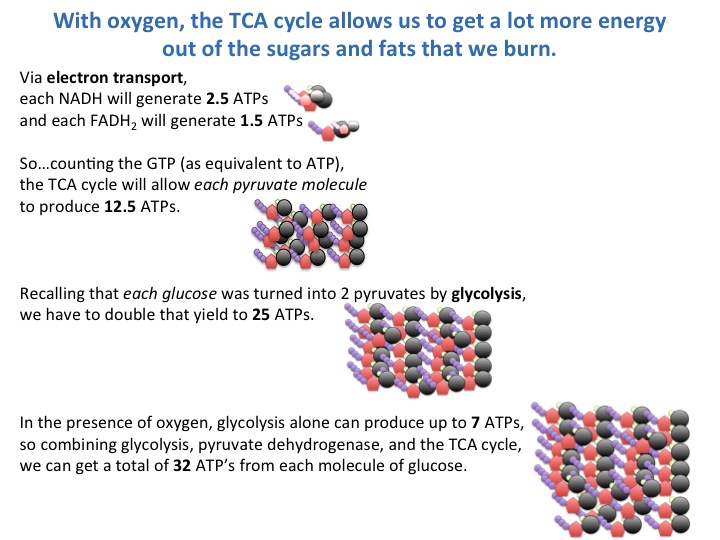PYRUVATE DEHYDROGENASE
|
Bottom Line: This complex enzyme catalyzes this reaction:
Pyruvate + Coenzyme A (CoA) + NAD+ à Acetyl-CoA + CO2 + NADH + H+
|
The acetyl-CoA thus produced can go into the TCA cycle or be converted into fatty acids, ketone bodies, or steroids. NADH can be used to generate energy via electron transport: 2.5 ATP's.
TRICARBOXYLIC ACID (TCA) CYCLE
|
Bottom Line : In this mitochondrial pathway, the 2-carbon acetyl group derived via glycolysis from glucose or by oxidation of fatty acids, disappears and is replaced by two CO2 's. The acetyl groups are fully oxidized to generate NADH and FADH2 and a great deal of energy is generated. |
The TCA cycle only occurs under aerobic conditions; it generates energy in the form of GTP (equivalent to ATP), NADH, and FADH2
For a picture of the TCA cycle, see Devlin, Figure 14.18.
Learning the TCA cycle is easier if you keep your carbons straight.
 |
Change slides by using the arrows or drop-down menu. If the slide has sound, the Play button will be active. |
|
This content requires JavaScript enabled.
|
|
Starting with pyruvate, the cycle can be summed up as:
Pyruvate + 4 NAD+ + FAD + GDP + Pi —> 3 CO2 + 4 NADH + 4 H+ + FADH2 + GTP






